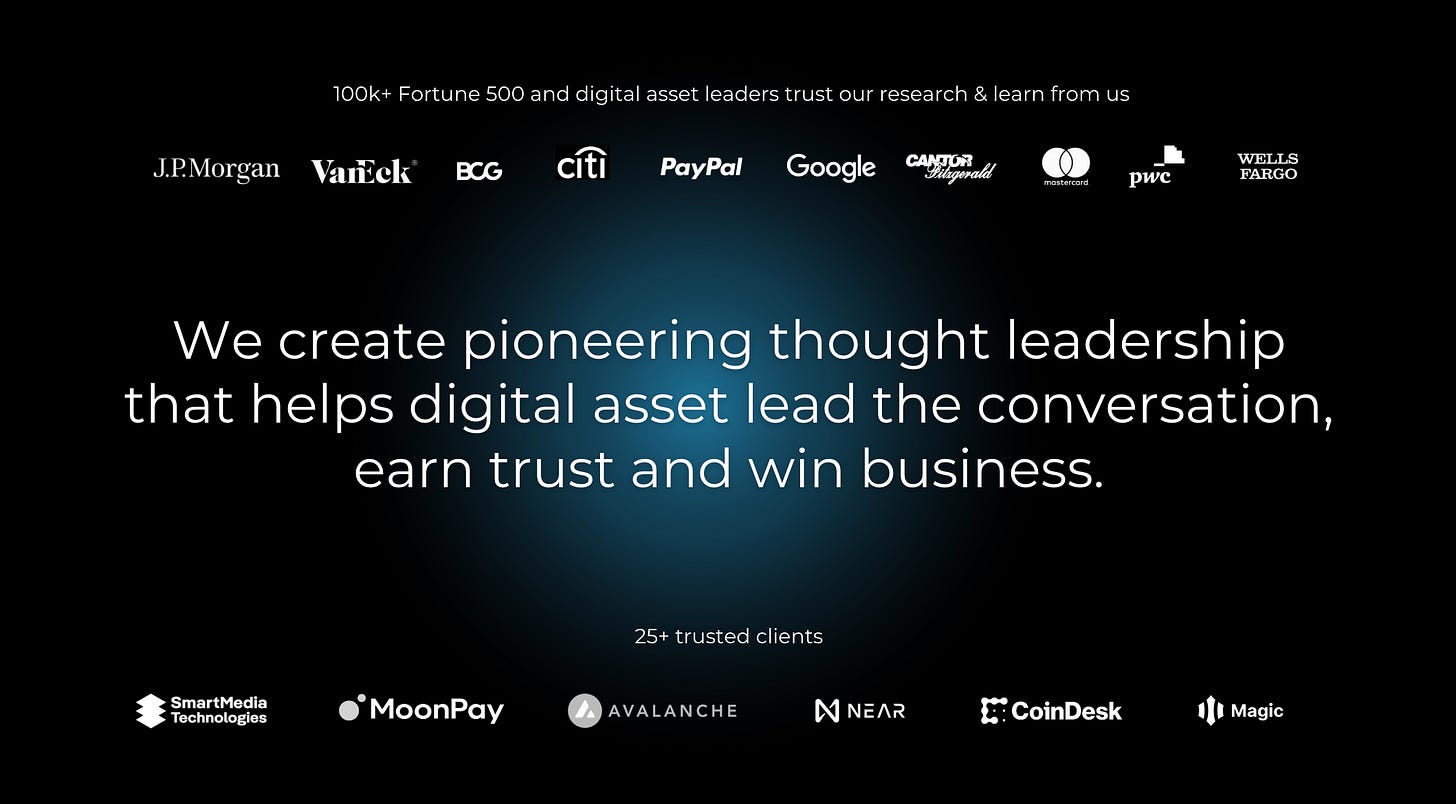Hi, it’s Marc. ✌️
“Enterprises don’t want ten integrations to enter the blockchain space. They want one partner that does it all: on-ramps, off-ramps, custody, cards, compliance.”
We sat down with Max von Wallenberg, the co-founder and CEO of Iron to discuss how stablecoins are becoming the new rails for global finance.
Iron is a stablecoin payments infrastructure company recently acquired by MoonPay. It provides stablecoin APIs that enable wallets, fintechs, and enterprises to move money seamlessly across fiat and crypto rails—covering on-ramps, off-ramps, global payouts, and banking-like functionality for wallets.
We’ll talk about:
Regulatory catalyst
Enterprise FOMO
Infrastructure moats
Why every fintech will go stablecoin-native
… and much more.
The enterprise adoption wave
Max keeps it simple:
"They're better money. If you think about what they can do and how the existing global money system works or doesn't work, it just showed there was a time for an upgrade."
The upgrade is speed and programmability. Cross-border transfers that took days now happen in seconds. Wire transfers that cost 6-7% now cost sub-1%. For any business with material cross-border volume, this is not a tech experiment, it’s a margin and working-capital decision.
"Wire via correspondent banks, money is taken hostage, takes forever. And stablecoins are very instant programmable means of money settlement,"
Max explains.
The Stripe acquisition of Bridge for over $1B was the watershed moment.
"That really jolted stablecoins into the limelight because PSPs across the world need this stamp of approval if Stripe's doing it, then we're gonna follow."
Here's the harsh reality: building compliant stablecoin infrastructure is brutally complex.
Max breaks it down:
"I don't see many companies from an infrastructure perspective that do all of it. It's not just, 'hey, I can issue a stablecoin.' The real solution is much more multifaceted."
"We didn't even know when we got into this business, how complex it would be,"
Max admits.
MoonPay's acquisition of Iron isn't just about adding features. It's about owning the entire stack—from on-ramps to off-ramps to payments processing.
"We think everyone is going to have a digital currency wallet,"
MoonPay's CEO told CNBC.
From banking to stablecoins
Max's path wasn't linear. He started as CEO of one of Germany's first digital asset exchange, Boerse Stuttgart Digital Exchange, then built a Solana wallet called Ultimate that was acquired by Jupiter.
But he kept hitting the same wall:
"What's the glue to the traditional world? How do we get regular people into this ecosystem? It typically always breaks at fiat connectivity."
Iron originally started as a bank. They spent 8-10 months pursuing a banking license before realizing it would take years and require massive regulatory capital.
"I saw stablecoins as a much better rail to build what I wanted to build."
Smart pivot. He adds:
"I'm always surprised how bad the US banking system is. The ACH, et cetera, real-time payments are just not as good as Europe. For once, Europe has a leg up here in terms of our technology when it comes to SEPA."
Here’s what we’ve covered:
B2B payments are the killer use case: Cross-border B2B payments represent trillions in annual volume. PSPs and enterprises are moving here first because stablecoins free up working capital and provide a speed advantage over wire transfers.
How Iron works: Iron lets enterprises and wallets offer direct fiat-to-stablecoin rails. Example: wire €1,000 → stablecoins appear instantly in your wallet. It supports 30 currencies across 80+ countries, including real-time local payouts (like PIX in Brazil).
What’s next for fintechs: Within 24 months, every fintech will either be stablecoin-native or risk being uncompetitive. Liquidity (USDC/USDT) matters more than which blockchain you use, and the market will consolidate to 3–4 global stablecoins plus regional players.
And much more.
On Fortune 500 Adoption, Max said:
“A lot of PSPs tell us: we don’t want stablecoins on our balance sheet. So they send us fiat, we handle the stablecoin side. They want efficiency without process change.”
What’s next: your stablecoin strategy
Start with use case identification. Where do currency conversion delays hurt your business? Cross-border supplier payments? International payroll? Multi-currency treasury management?
"Use case first," Max advises. "They have to really tell us what they need to get done. And then I can tell them whether stablecoins solve their use case."
The question isn't whether to integrate stablecoins. It's how fast you can move.
"Pretty much every fintech in call it 24 months will be built on top of stable coins or have stable coin support because you can't afford not to,"
Max predicts.
Global expansion becomes easier with stablecoin rails. Instead of building banking-as-a-service relationships in each country, you get global coverage out of the box.
On what blockchain should you build? It doesn’t really matter.
Liquidity is much more important:
"Stable coins today often are transfer assets. So what you want with that transfer asset to happen is super liquid and ubiquitous acceptance,”
such as USDT and USDC.
"Winner takes most, not winner takes all. I think there's going to be three, four big ones. Liquidity begets liquidity, and there's only so much to go around."
So: Start mapping your stablecoin strategy today. In crypto, the window for competitive advantage is measured in months, not years.
Take care, Marc
PS: Reach out for a direct intro to the MoonPay/Iron team.
More from us:
🚀 Work with us: We create pioneering thought leadership that helps digital asset and technology companies lead the conversation, earn trust and win business.












